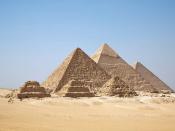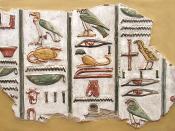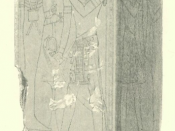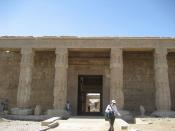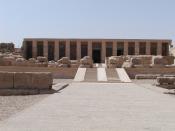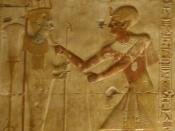Seti I: Bringer of Renaissance? The ambitions of Seti I was to restore Egypt's former glory, aiming to achieve this through emulating Thutmose III's military strategies and Amenhoptep III's building feats. 'Bringer of Renaissance' was one of the Two Goddess attributes that Seti I held as a part of his title, and he fulfilled this epithet by creating masterful art forms and architecture. Although Seti's works did not have the enormous scale of this son Ramesses' II's, the delicacy and sophistication in attention to detail was amongst the best in the history of ancient Egypt.
"Renaissance", which can be interpreted as "rebirth", essentially takes the meaning of "revival of art and architecture". Seti I undertook various building projects during his reign. The temple of Osiris at Abydos is one of the best examples of Seti I's achievements. It was constructed of fine quality white limestone and took an unusual L-shape instead of the normal rectangular shape.
The main gods it was there for were Osiris, Isis, and Horus. However the push for promoting more than one supreme god, as it was in the dynasty before, is seen here from sections dedicated to Amun of Thebes, Ptah of Memphis, and Re-Horaktet of Heliopolis.
The relief work that exists on the walls of this temple has been observed to be equaling the greatness achieved by Amenhoptep III. There are various scenes and rooms depicting offerings to the various gods, displaying skillful workmanship. Also in this temple, Seti created a long listing of all the Kings of Egypt. This list was selective, in that he left out the names of the ones that he perceived irrelevant. The significance of this is that as a pharaoh of no royal ancestry, he wished to establish himself as being just as fitting as his predecessors were. Building of temples and other monuments worked towards Seti's goal of fulfilling the role of a pharaoh. He was expected to uphold Maat by building, signifying creation out of chaos just like how life sprang forth from chaos in the beginnings of the Egyptian religion.
Seti I's tomb in the Valley of the Kings is another grand example of the amount of attention he placed in building beautiful structures. His 100-metre tomb contains walls of relief carvings that protrude out, and a large alabaster sarcophagus. Also his mother's tomb took similar majesty in the Valley of the Queens. His tombs were the first to begin relief carvings and decorations from the entrance onwards, and this practice was followed.
Other buildings Seti built included his summer palace at Avaris, and he also contributed substantially to temples at Memphis and Heliopolis standing in tribute to Ptah and Re respectively. Including these and the previous two buildings mentioned, Seti I's art remain unmatched until the end of the great Empire. It is often suggested on Egyptian inscriptions that the excellence of Seti I was a direct result of this devotion to protecting the well being of his workers.
Seti I understood the poor conditions of workers of quarries and miners, and provided extra provisions and special status. In return, they worked happily for the pharaoh. It has been argued that this relationship existed as Seti was originally a general in the army and understood everyday life of the Egyptian workers better then other pharaohs.
Seti I set basis for his son to establish an even greater status and prosperity for Egypt. Although it did not last much longer after Ramesses II, where Egypt slowly declined in activities and eventually in the "chaos" as they saw it. However no matter the outcomes of his successors, the title 'Bringer of Renaissance' was a well-deserved title for Seti I as he was able to, after several pharaohs before him failed, take Egypt forward.
